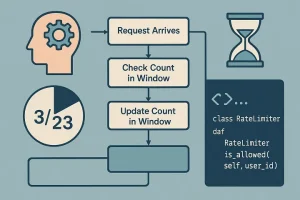Breakthrough in Machine Vision Algorithms: Transforming the Future of Visual Technology
Machine vision algorithms have become a cornerstone of modern technology, enabling computers and machines to interpret and understand visual information from the world around them. Recent breakthroughs in this field are pushing the boundaries even further, opening up exciting possibilities across industries such as manufacturing, healthcare, autonomous vehicles, and robotics. This article explores the latest advancements in machine vision algorithms, the technology driving these changes, and their implications for our future.
Understanding Machine Vision Algorithms
At its core, machine vision refers to the ability of computers to process and analyze images or video feeds in order to make decisions or provide actionable data. Machine vision algorithms serve as the computational framework behind these capabilities. They involve extracting relevant visual features from raw data, identifying patterns, categorizing objects, and delivering precise insights, often in real time.
Traditional machine vision systems relied heavily on handcrafted features and predefined rules tailored for specific tasks. However, with the rise of deep learning and AI, the development of machine vision algorithms has accelerated significantly, allowing systems to learn directly from complex datasets rather than relying solely on human-crafted logic.
Key Breakthroughs in Machine Vision Algorithms
1. Deep Learning and Convolutional Neural Networks (CNNs)
One of the most influential breakthroughs in the domain has been the application of deep learning models, particularly convolutional neural networks, to visual data processing. CNNs are designed to automatically and adaptively learn visual features directly from data, eliminating much of the manual tuning required in earlier systems.
This advancement has enabled machine vision algorithms to achieve unprecedented accuracy in tasks like image classification, object detection, facial recognition, and semantic segmentation. These improvements have made machine vision more reliable in challenging environments, such as noisy or cluttered scenes, and have expanded its applicability across diverse conditions.
2. Real-Time Processing with Edge AI
Another significant development is the integration of machine vision algorithms with edge AI devices. These are computing devices that perform data processing locally, near the source of data collection, rather than relying exclusively on cloud servers.
Recent breakthroughs have made it possible for machine vision algorithms to run efficiently on smaller hardware with limited resources while still maintaining high accuracy. This enables real-time image analysis in applications like industrial automation, quality inspection, surveillance, and augmented reality where instantaneous feedback is critical.
3. Explainable and Interpretable Vision Models
Despite their power, traditional deep learning models are often viewed as “black boxes,” making it difficult to understand how exactly decisions are made. In response to this challenge, researchers have made strides in developing explainable and interpretable machine vision algorithms.
These new models incorporate mechanisms to highlight the parts of an image that influence a particular prediction or classification, building trust and transparency into AI systems. This is particularly important in critical sectors such as healthcare diagnostics where understanding the rationale behind a machine’s decision can guide human experts.
Impact of Breakthroughs on Industry and Society
The enhancements in machine vision algorithms are having a profound impact on numerous industries.
Manufacturing and Quality Control
In manufacturing environments, improved machine vision algorithms facilitate precise defect detection and quality assurance. Automated inspection systems equipped with these algorithms can identify microscopic flaws or inconsistencies faster and more accurately than human inspectors, reducing waste and boosting productivity.
Healthcare and Medical Imaging
In healthcare, advanced machine vision algorithms are transforming medical imaging analysis. For example, AI-powered vision systems can swiftly detect abnormalities in X-rays, MRIs, or retinal scans, assisting radiologists in early diagnosis and treatment planning. These breakthroughs hold promise for improving patient outcomes and reducing diagnostic errors.
Autonomous Vehicles
The ability of autonomous vehicles to safely navigate environments depends heavily on reliable machine vision. Breakthroughs that improve real-time object recognition and scene understanding help self-driving cars better detect pedestrians, other vehicles, and obstacles, making autonomous travel safer and more feasible.
Robotics and Automation
In robotics, enhanced vision capabilities allow robots to perform more delicate and complex tasks, such as picking and placing objects in cluttered settings or collaborating safely with humans in shared workspaces. These advances help usher in a new era of smart automation.
Looking Ahead: Challenges and Opportunities
While the recent breakthroughs in machine vision algorithms are promising, several challenges remain. Issues like data privacy, computational resource demands, and algorithmic bias still need careful consideration and mitigation.
Moreover, continued research into making machine vision models more efficient, scalable, and interpretable will unlock further potential. Researchers are exploring novel approaches such as neuromorphic computing and combining vision with other sensory data to create more holistic AI systems.
Conclusion
The breakthroughs in machine vision algorithms represent a paradigm shift in how machines perceive and interact with the visual world. From deep learning advancements to real-time edge processing and explainability, these innovations are driving transformative changes across multiple sectors. As the technology continues to evolve, it will likely redefine standards for automation, safety, and efficiency, ultimately shaping a smarter and more connected future.




